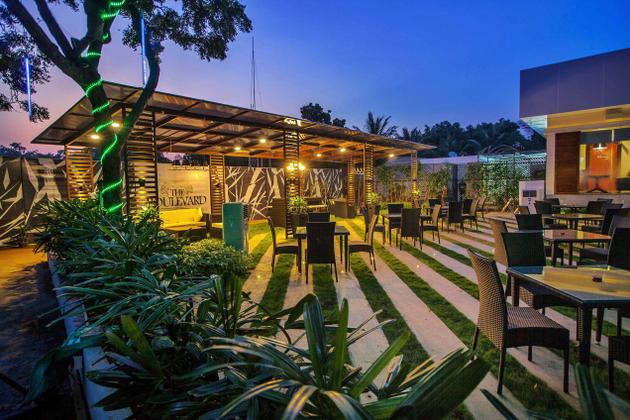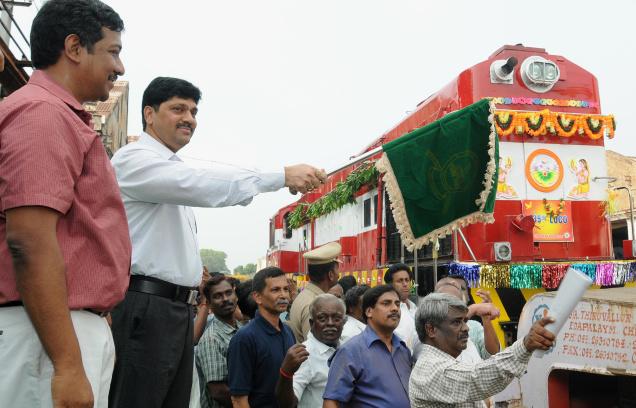What do you think was the most significant battle in modern Indian history (1498-1948), I was recently asked by a researcher who called on me. I had no hesitation in replying, “The Battle of the Adyar River.” Much to her surprise.
The battle was a consequence of Fort St. George surrendering to the French early in October 1746. On October 15, the Nawab of Arcot — whom the English had supported — sent troops under the command of his son, Mahfuz Khan, to invest Fort St. George and ask the French to return the settlement to the English. Instead, the French broke out of the fort and dispersed the Nawab’s troops. Mahfuz Khan, reinforcing his army, it is said, to about 10,000 men, then moved south, seized San Thomé and formed a battle line on the north bank of the Adyar River on October 22 to prevent the French moving up reinforcements from Pondicherry. Two hundred French and French-trained Indian troops led by a Swiss mercenary, Captain Paradis, force marched from Pondicherry on the same day, crossed Quibble Island and took positions on the south bank of the Adyar River where they came under ineffective artillery fire from Mahfuz Khan’s forces.
On the 24th, Paradis decided to ford the river with his 200 men after he heard that a similar sized force led by de la Tour was on its way from Fort St. George to attack the rear of Mahfuz Khan’s line. But in the event, de la Tour arrived too late to support Paradis whose troops, with disciplined firing and then charging with bayonets, broke the Nawab’s line. Mahfuz Khan’s troops fled and, so, the Battle of the Adyar River, which began on the morning of October 24, 1746, ended by that evening, with the French occupation of Fort St. George consolidated.
In terms of later battles and today’s ones, the Battle of the Adyar River was not much of a clash of arms. But it proved one thing. That disciplined European troops and Indian sipahis trained in the European manner of soldiering could rout thousands of Indian soldiers with little training and less discipline. And that lesson was not lost on the English who, the same year, in their last bolt-hole on the Coromandel, Fort St. David, Cuddalore, began raising and training what became the Madras Regiment that was to be the nucleus of the Indian Army of today that grew from those beginnings. It is with that Army that the British created an India that has grown into the modern nation of today. Triggering English thought to create such a military force that was to spearhead the drive for Empire and the creation of modern India is the significance of that battle that many treat just as a footnote to history. From my point of view, it was a pivotal point in history.
Where are the tanks?
Not long ago, about a 100 years ago, Madras had within its municipal limits something like 300 water bodies. Today, there are hardly a couple of dozen. The rest have all been built over. And that includes three of its biggest ones: the Long Tank, the Vyasarpadi Tank and the Spur Tank. And lest we blame the authorities of post-Independence Madras, we should recall that the process of replacing precious water with brick and mortar began around 1920.
The Long Tank was a boomerang-shaped one, about 6 km in length from the southernmost tip of what was called the Mylapore Tank to the westernmost tip of the tank it flowed into, the Nungambakkam Tank. The Mylapore Tank stretch was one of the early venues (1870s-90s) of the Madras Boat Club regattas, having as it did “a fine expanse of water from the Cathedral Corner (where Gemini Studios used to be) to Sydapet…”. Blacker’s Garden, near what is now called Cathedral Garden Road (and then occupied by successive high Government officials) was where the boathouse was and where the Governor, his Lady and their entourage, together with his Band and other spectators (‘Europeans Only’) gathered to watch the finishes.
When there was a debate in the 1890s on whether this stretch or the Adyar (which is now the Club’s home course) was preferable, the supporters of the Long Tank pointed out, “Although the glare of the setting sun off the broad stretch of water was somewhat trying, a good view of the whole course could be had, which is not obtainable on the Adyar. The Long Tank provides a long broad stretch of deep water, the course being straight from start to finish, so that, for racing purposes, it is infinitely preferable to the river which winds about a great deal and presents at low tide, a shallow and uneven course almost throughout.” What a body of water to lose!
But lose it we did when, in 1923, the Town Planners decided that growing Madras needed more land for housing and proposed the Mambalam Housing Scheme for whose 1600 acres it became necessary to breach the Long Tank and let its waters into the Adyar. The breaching was done in 1930, and the development of Theogaraya Nagar (T’Nagar) began. Then, in 1941, the ‘Lake Area’ was developed on part of the Nungambakkam Tank and was followed by 54 acres being given for the campus of Loyola College. The last vestiges of the tank were handed over, in 1974, for the Valluvar Kottam complex.
The Vyasarpadi Tank, into which the water from 28 tanks once flowed, gradually gave way to post-Independence development and finally vanished under the weight of the Tamil Nadu Housing Board’s Vyasarpadi Neighbourhood Scheme and the Vyasarpadi Industrial Estate in the 1960s and 70s. And the Spur Tank all but vanished from around the 1920s as buildings came up for what is now the Kilpauk General Hospital. All that’s left of it is what is called Chetpet Lake, which is dry most of the time.
When the postman knocked…
Aruna Gill, in a response from Princeton on my item this past week on her book The Indus Intercept, writes that she has been neither to Pakistan nor its troubled Baluchistan province. “I have to thank,” she explains, “Google Maps for allowing me to zoom in on the terrain and the streets of Quetta for a bird’ eye view and a street’ eye view.” She then tells me, referring to her interest in the Indus script, that while her husband Gyan Prakash, who teaches at Princeton, is focussed on modern Indian history, her interest has always been “in the ancient worlds.” She adds, “Reading the history of ancient cultures humbles me — that they could know and think and do things with such limited resources. Ancient scripts are just one manifestation of this, while we take the written word so much for granted.”
* Additional information on the brothers Vembakkam Sadagopacharlu and Rajagopalacharlu (Miscellany, November 5) has been sent to me by reader V.C. Srikumar, the Editor of the Law Weekly.He tells me that the journal was founded in 1914 by V.C. Seshachariar, an advocate, the son of Rajagopalacharlu, whose elder son was V.C. Desikachari, Chief Judge of the Madras Small Causes Court. Referring to the appointment of Sadagopacharlu to the Madras Legislative Assembly, the first Indian to be so appointed, reader Srikumar points out that he was one of the three non-official members nominated in 1862 by Governor Sir William Dennison under the then introduced Indian Councils Act, 1861. The other two were Robert Campbell, chairman of the Madras Chamber of Commerce, and an earlier chairman of the Chamber, William R. Arbuthnot. The three first sat in Council on January 22, 1862.
Commending the choice of a person it later described as “a native pleader in an East India Company’s Court,” The Hindu stated, “He is a man of extensive and varied information regarding the country and its wants; is a sound practical lawyer; has come in contact with almost all sections of the population of the Southern Districts of the Presidency; is highly esteemed for his popular sympathies… and (he) possesses in abundance the essential requisites of a public man, to wit, sound judgment and tact.” Several acres of his property in Alamelmangapuram, Venkatesa Agraharam and what is now Raja Annamalaipuram were, on his death, endowed by his wife Echamma to the Sri Vedantha Desikar Temple, Mylapore, which has given much of the acreage on 99-year leases for housing development.
* Library Week, which was celebrated throughout the country from November 14 to 20, was, I am reminded by a reader, the outcome of the first All-India Public Library Conference which was held at the Gokhale Hall on November 14, 1919. Another significant outcome of the Conference was the founding on the same day of the All India Public Library Association. This was five years before S.R. Ranganathan, the ‘Father of Library Science’, entered the field. I wonder, then, who was the driving force in Madras who initiated the Conference and headed its Organising Committee. Someone indeed to be remembered.
source: http://www.TheHindu.com / Home> News> Cities> Chennai> Madras Miscellany> Arts> History & Culture / by S. Muthiah / November 25th, 2012




